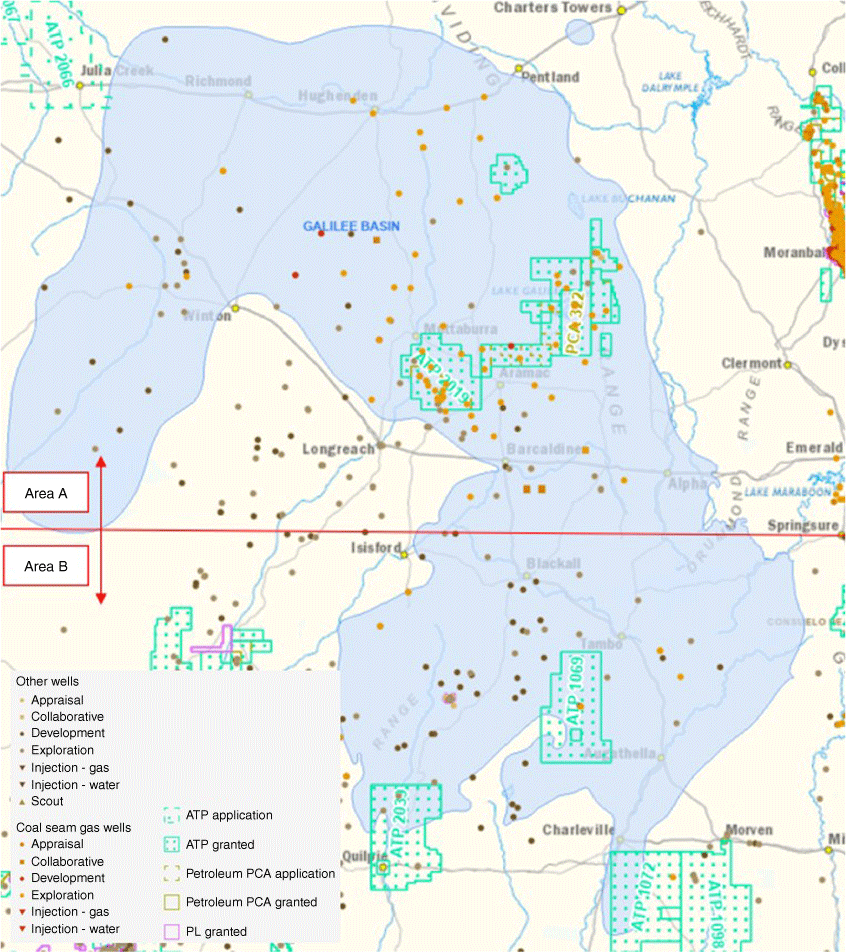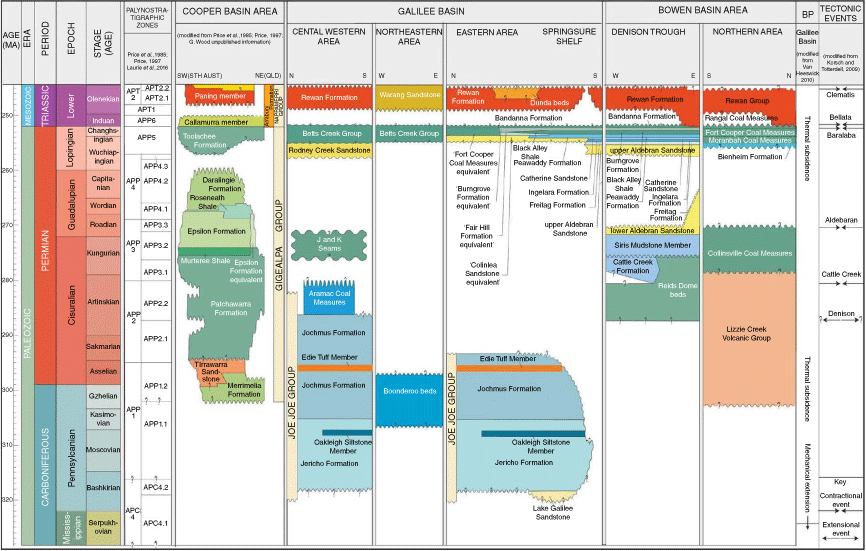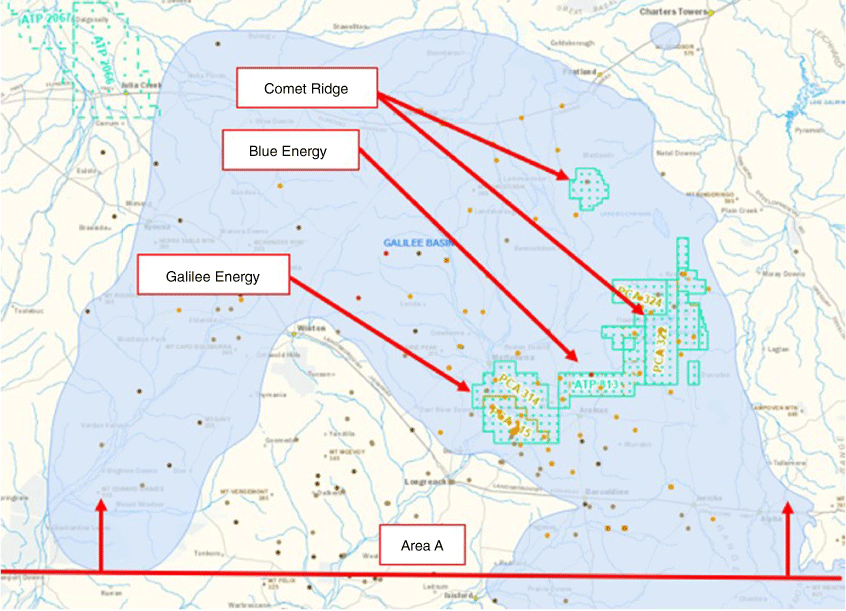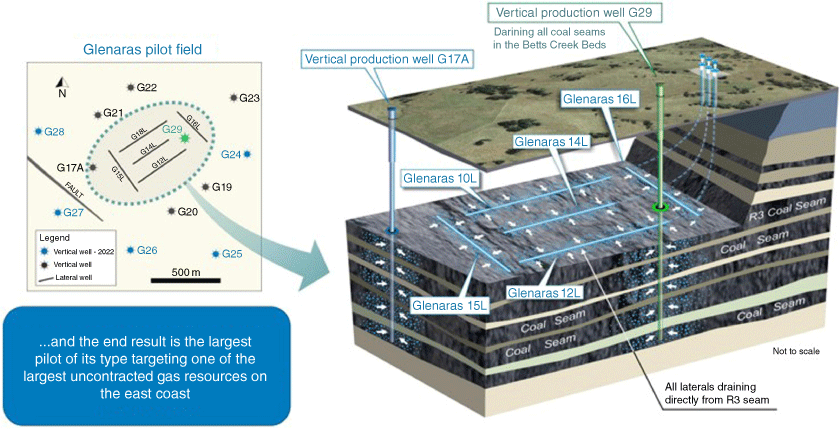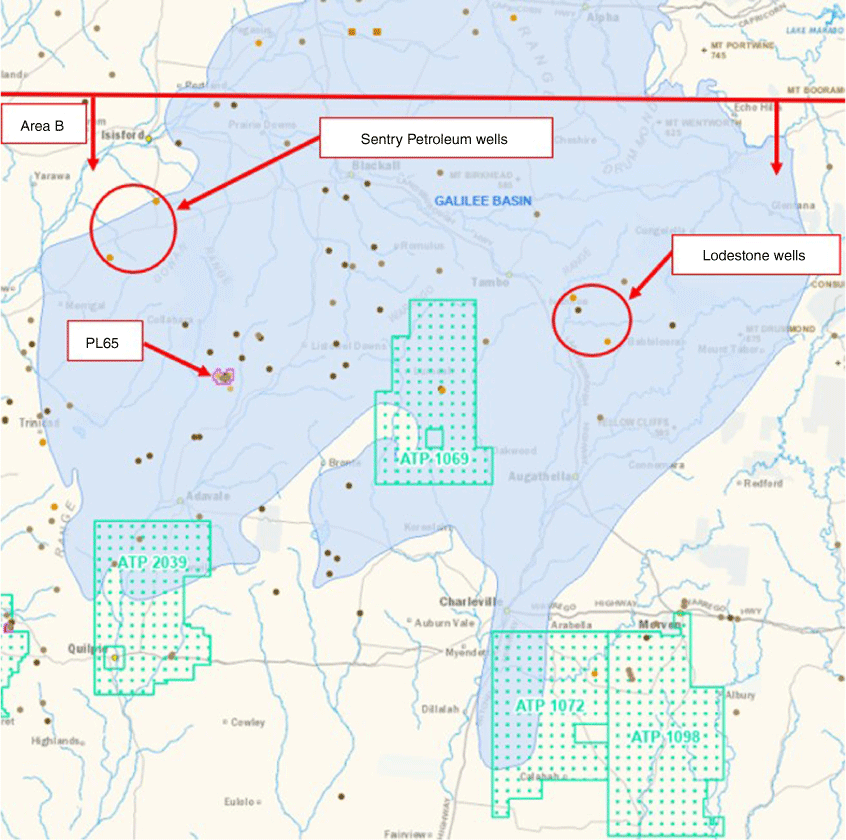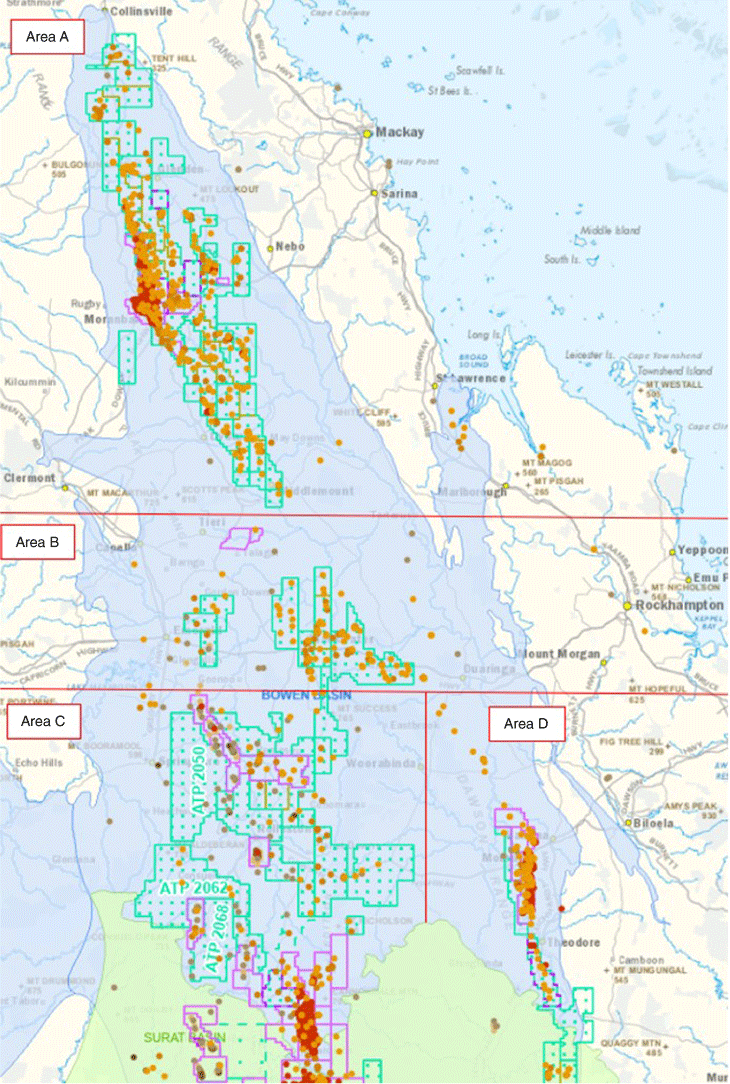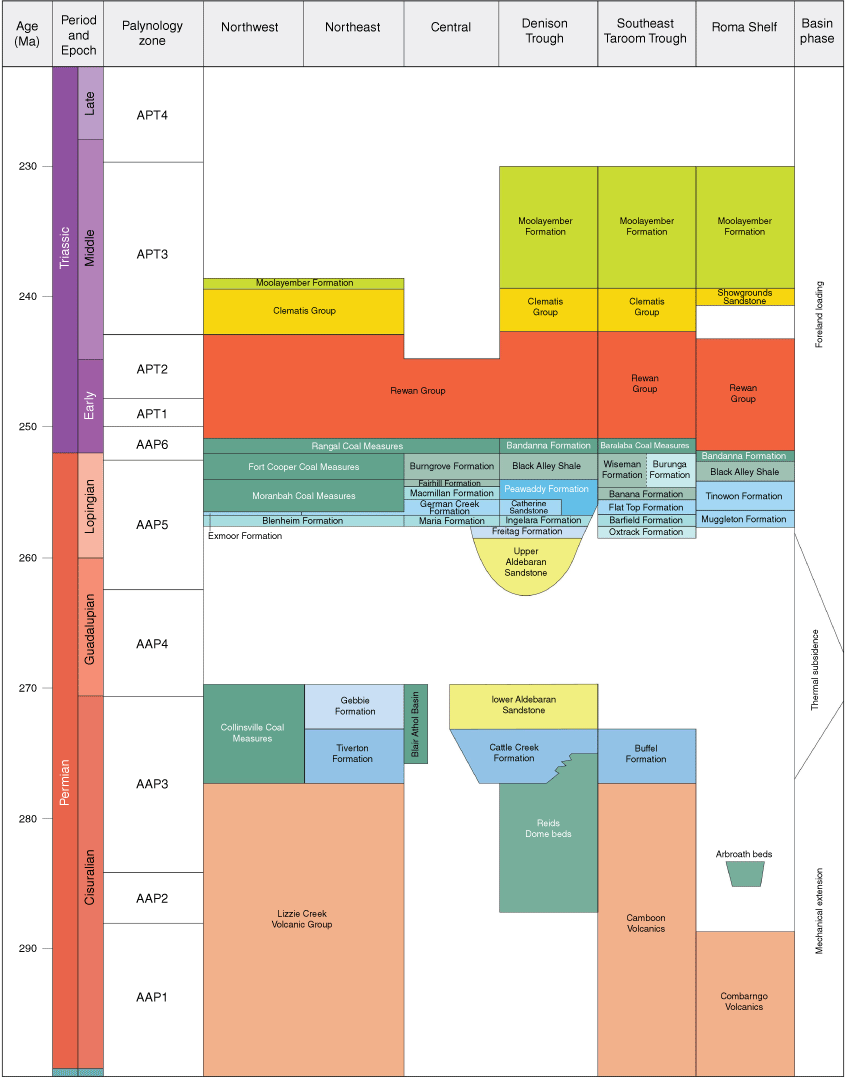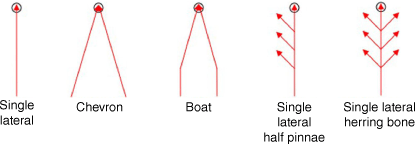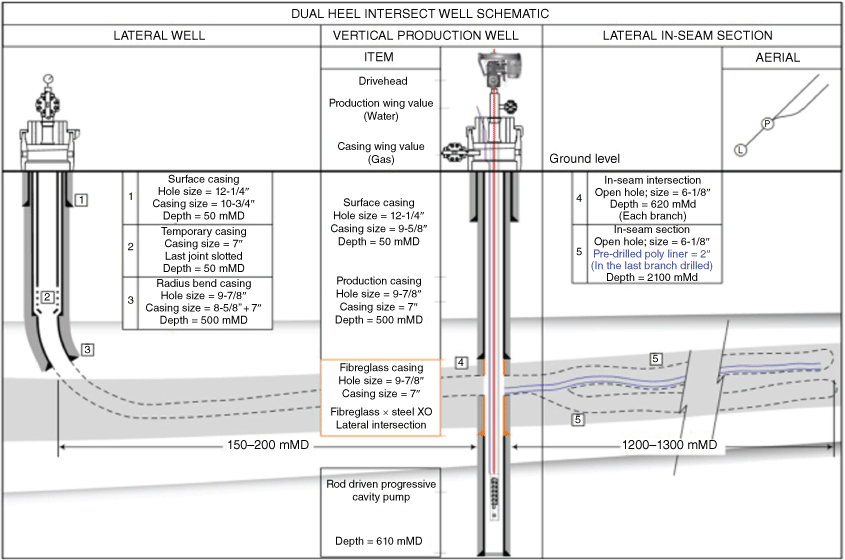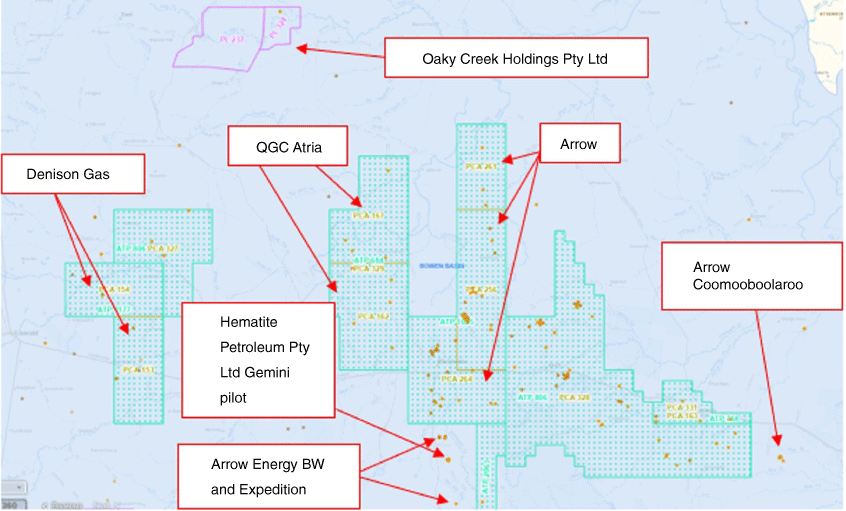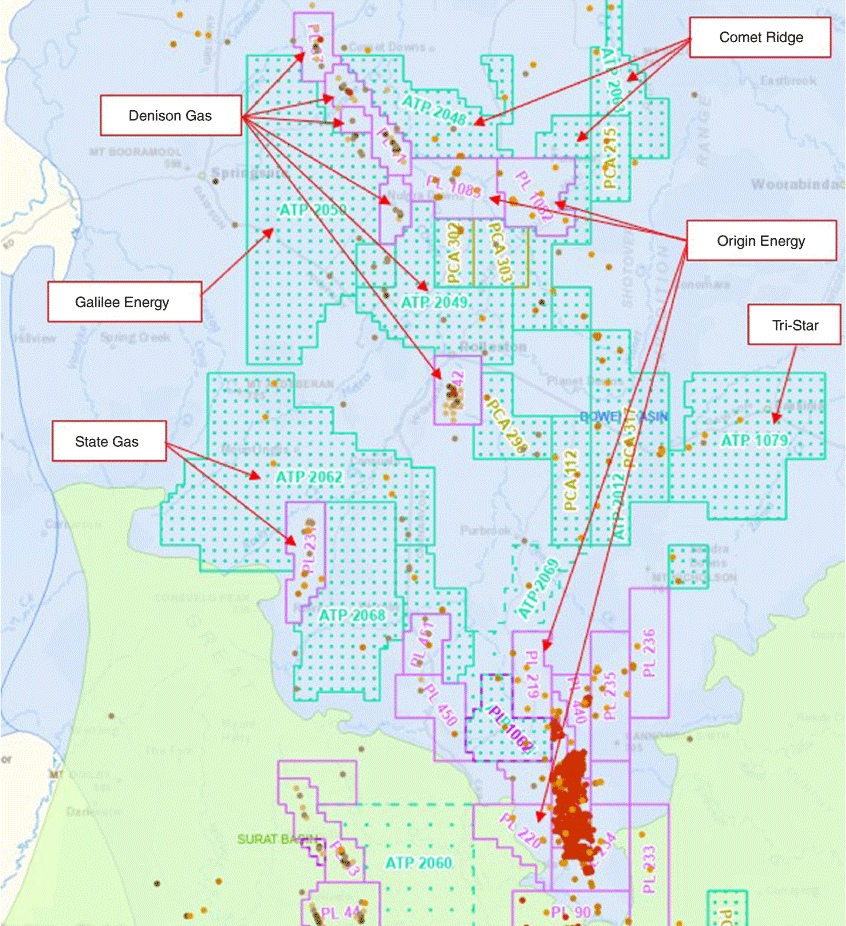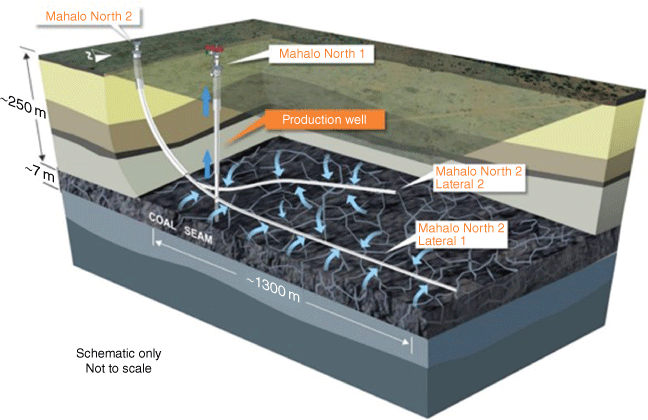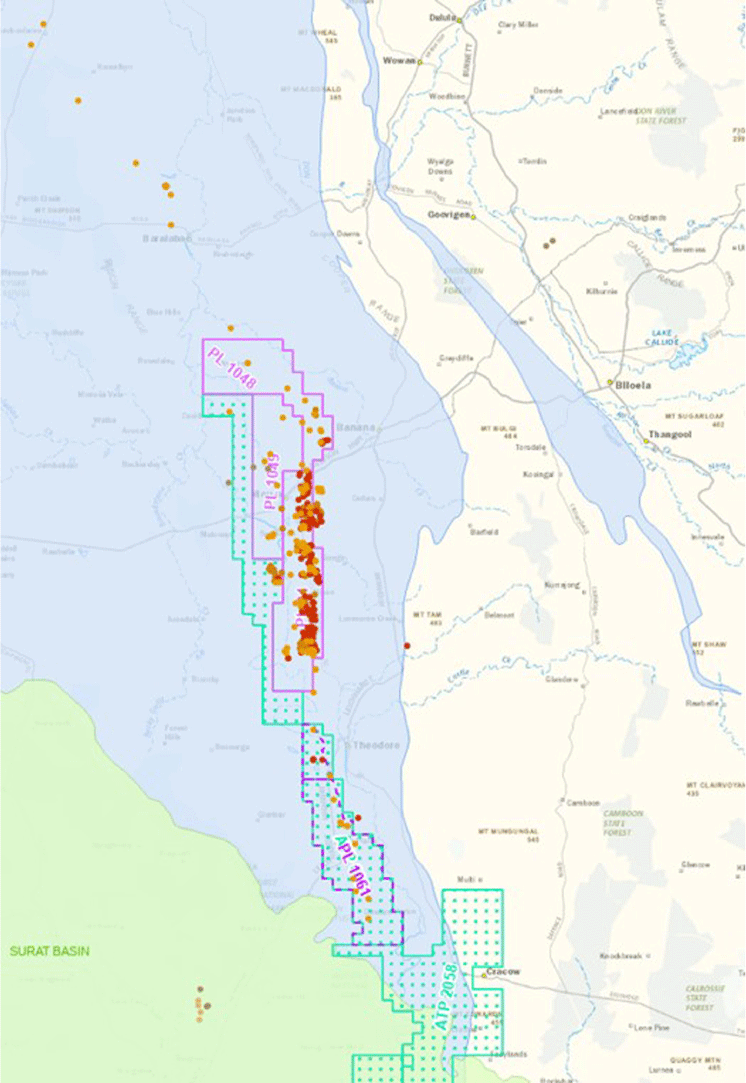Technology review of the Northern Bowen and Galilee basins
Michael P. Scott A * , Raymond Johnson Jr A , Janny Spilsbury-Schakel A and Andrew Garnett AA Centre for Natural Gas, The University of Queensland, Brisbane, Qld, Australia.
The APPEA Journal 63 90-109 https://doi.org/10.1071/AJ22116
Submitted: 9 December 2022 Accepted: 13 February 2023 Published: 11 May 2023
© 2023 The Author(s) (or their employer(s)). Published by CSIRO Publishing on behalf of APPEA. This is an open access article distributed under the Creative Commons Attribution-NonCommercial-NoDerivatives 4.0 International License (CC BY-NC-ND)
Abstract
This paper reviews and summarises the work that has been conducted and the technology used in exploring and developing the Northern Bowen and Galilee basins in Queensland. It examines the methods operators have used in drilling, completing and testing wells through the varying stages of exploration, appraisal and development in the different parts of the basins. It examines all the work conducted in the Betts Creek Beds and Aramac Coal Measures throughout the Galilee Basin; the Moranbah Coal Measures, Rangal Coal Measures and Fort Cooper Coal Measures in the Moranbah area of the Bowen Basin; the Rangal Coal Measures, Burngrove Formation and Fairhill Formation in the Blackwater area; the conventional and coal seam gas developments in the Rolleston area, including the Bandanna Formation plays near Injune; and the Baralaba Coal Measures in the Moura area. Wells have been completed both open and cased hole with techniques including vertical wells, both with and without hydraulic fracturing and cavitation, as well as a variety of horizontal well designs including surface to inseam wells with vertical intercept wells and multiple lateral sections, chevron wells and both heel and toe intercepts. Operators have also implemented multiple wells on one pad. Throughout the Northern Bowen Basin, horizontal well drilling has been a key technology in commercial development. Generally, activities within the Galilee Basin have not progressed as far as the Bowen Basin, but nevertheless, horizontal wells are also emerging as a key technology.
Keywords: Bowen Basin, coal seam gas, conventional wells, Galilee Basin, horizontal wells, hydraulic fracturing, well and casing design, well completion.
Introduction
There are a vast number of historical references about the Bowen and Galilee basins. Most of this available literature has focused on geological aspects and resource potential, both from a coal and a petroleum perspective. While there exists information on the well-completion design and techniques trialled in the basins, it is sporadic and incomplete, with no comprehensive summary publicly available. Examples are provided, along with a literature review, in the Supplementary Information.
This document is a technology review of petroleum exploration, appraisal and development in the Northern Bowen and Galilee basins in Queensland based on public domain information. Whilst most of the paper focuses on coal seam gas (CSG) activities, it also covers conventional and non-CSG unconventional activities (referred to as other wells). The term 'Northern Bowen Basin' refers to the area of the Bowen Basin that is north of the sub-crop of the Surat Basin.
The Australian and Queensland governments are promoting activities ‘to crack complex geological challenges and establish cost-effective gas flows across four sites within the [Northern Bowen and Galilee] basins’ and are considering a potential for co-funded gas well trials to bring down production costs and identify commercially viable pathways to market for gas (Australian Government 2021). This paper, and a more detailed report (Scott et al. 2023), provide insight into current activities and uncertainties around past activities to support and evaluate proposals towards these trials.
Galilee Basin
The Galilee Basin has been split into two areas for this study, Area A and Area B, as depicted in Fig. 1.
Geological setting
The Galilee Basin is an extensive intracratonic basin containing up to 2800 m of Late Carboniferous–Middle Triassic strata, located in central Queensland. It is situated on the inboard margin of the New England Orogen, and its development is closely related to the initiation and formation of the adjacent Bowen Basin. The stratigraphy of the Galilee Basin is shown in Fig. 2.
Galilee Basin Area A
A summary of the tenements and work that has occurred in Area A is provided in Supplementary Table S1. Three companies, Blue Energy, Comet Ridge, and Galilee Energy, currently have activities in the area. The location of the tenements held by these operators is shown in Fig. 3.
Blue Energy has drilled six CSG wells in their tenements from 2008 to 2013, targeting the Betts Creek Beds and Aramac Coal Measures. Reported activities have not progressed beyond exploration, with core and drill stem tests (DSTs) conducted on most of the wells. No completion activities or production testing appears to have occurred.
Comet Ridge has applied for six Potential Commercial Areas (PCAs) to cover their three Authority to Prospects (ATPs). Prior to Comet Ridge, there were four other wells drilled in these tenements that were abandoned immediately post-drilling. There were also three CSG wells that were drilled by Queensland Energy Resources in 2012–2014, which targeted the Betts Creek Beds. These three CSG exploration wells were cored and abandoned at the time of drilling.
Comet Ridge has drilled six CSG wells in their tenements. All targeted the Betts Creek Beds, with core taken and formation tests performed. Three of the wells were abandoned and three were cased and suspended. In addition to CSG exploration and appraisal, Comet Ridge has drilled three other wells (Albany 1, Albany 1ST1 and Albany 2 located in ATP744/PCA320). These wells were drilled on the same structure as the Carmichael 1 well and targeted the Lake Galilee Sandstone. The Albany 1 well was drilled in mid-July 2018, and on the 28th of June 2018 Comet Ridge announced a stabilised gas flowrate of 230 mscf/day across a 13 m interval after a 24-h flow period (Comet Ridge Limited 2018). As reported in Australian Securities Exchange (ASX) announcements (Comet Ridge Limited 2019, 2020a, 2020b), Albany Creek 2 was fracture stimulated across three intervals in December 2019. In January 2020 the well was flowed with the use of nitrogen lift, with over 90% of the fracturing fluid recovered. Operations were suspended after extended periods of rain. There were plans to stimulate the Albany 1ST1 well; however, it appears that this has not yet happened. Currently, only the Albany 1 well completion report is publicly available, with the hydraulic fracturing activities completion reports also not yet available.
In the early to mid-1990s, Enron Energy Australia Pty Ltd (Enron) drilled the initial Rodney Creek and Crossmore wells in what was then ATP529. These wells targeted the Betts Creek Beds and Aramac Coal Measures. Multiple core holes were drilled with techniques including cased, cemented and fracture stimulated wells.
By 2000, Galilee Energy Limited (Galilee Energy) had taken over operations in ATP529 from Enron. In 2000, Galilee Energy drilled four wells, Rodney Creek 4 to Rodney Creek 7, to make a five-well pilot along with the existing Rodney Creek 3 well. The wells had 7′ casing cemented to total depth (TD) and were fracture stimulated. Following this work, Galilee Energy did not drill the next well, Rodney Creek 8, until 2007. Rodney Creek 8 was a core well targeting the Betts Creek Beds and Aramac Coal Measures and was located approximately 5 km south-west of the previous pilot.
In 2008, AGL Energy Limited (AGL) became the operator. As part of this, AGL drilled a five-well pilot, comprised of Glenaras wells, adjacent to Rodney Creek 8. These wells continued to target the Betts Creek Beds and were a mixture of cased, cemented and fracture stimulated and open hole wells that were underreamed and had a 7′ liner. From 2009 to 2011 AGL conducted a seven-well exploration program, with the wells scattered throughout the tenement. All of the wells were cored, with four of the wells abandoned at the time of drilling and the other three wells cased and cemented to TD.
In 2015, the project once again became 100% operated by Galilee Energy, with the tenement renewed as ATP2019. The next wells were drilled in 2018. At this time three lateral wells were drilled from one pad.
In 2019, Galilee Energy drilled an additional three laterals that increased the well density around the previous lateral wells and were orientated as a five-well lateral pilot. In 2020, Galilee Energy drilled six vertical wells surrounding the lateral pilot.
In 2022, Galilee Energy drilled an additional six vertical wells with the latest project layout shown in Fig. 4. The well completion report for the wells drilled in 2020 and 2022 are currently not publicly available. The main objective appears to have been to establish how many wells and how much shielding would be necessary to adequately lower the reservoir pressure and produce commercially viable rates of gas.
In Area A there are 48 CSG wells and 41 other wells that have been drilled outside the current tenements. The wells were generally vertical exploration wells, which were cored and abandoned at the time of drilling.
Both open and cased hole wells have been drilled in the area. Techniques that have been implemented have included hydraulic fracturing, horizontal wells and high density well pilots, including wells used to shield production wells from water influx. Petroleum activities in the area tend to generally be moving towards the use of horizontal wells. To date, the highest rates of gas reported in a conventional well has been ~230 mscf/day, and in CSG wells it has been ~90 mscf/day.
Galilee Basin Area B
A summary of the tenements and work that has occurred in Area B is provided in Supplementary Table S2. This area has very few current tenements situated within it as shown in Fig. 5.
Outside of the current tenements there have been 46 other wells drilled from the 1920s through to 1996, and five CSG wells were drilled between 2009 and 2011, all of which have been abandoned. The wells were generally exploration wells without a focus on trialling different well design or completion techniques.
Within the current tenements the main petroleum activities are the Gilmore gas field, located in PL65, which is currently operated by Australian Gasfields Limited (a subsidiary of the ASX listed Energy World Corporation). The main target of the Gilmore gas field is the Lissoy Sandstone, with a secondary target of the Log Creek Formation, both of which are not in the Galilee Basin but rather in the underlying Adavale Basin.
Other tenements include:
ATP1069, with is held by Tomorrow Energy Corporation Pty Ltd.
A portion of ATP1072, which is operated by Northstar Energy, but no activity is reported to have occurred within.
The northern portion of ATP2039, which is operated by Chi Oil and Gas and whose activities to-date have been focusing on desktop studies targeting the Adavale Basin.
Northern Bowen Basin
The Northern Bowen Basin has been split into four areas for this study, as depicted in Fig. 6. This was to assist with presentation of the results and based on geological sequences and target intervals. Area A roughly represents the Moranbah CSG fairway, the Nebo Syncline and the Collinsville Shelf. Area B includes the Capella Block and Folded zone, which are largely associated with Jellibah faulted structuring. Area C is the area to the west of the Taroom Trough and covers the Bandanna CSG Fairway and the Denison Trough. Area D is the area to the east of the Taroom Trough and covers the Baralaba CSG fairway and the Moura area.
Geological setting
The Bowen Basin lies predominantly in eastern Queensland with the southernmost tip extending into New South Wales. It covers approximately 160 000 km2, stretching from Collinsville in central Queensland down to Moree in northern New South Wales. Approximately half of the southern portion of the Bowen Basin underlies the Surat Basin. This study focusses only on the Northern Bowen Basin, which covers approximately 80 000 km2.
The Bowen–Gunnedah–Sydney Basin system is a narrow, elongated sedimentary basin that is continuous for 1500 km in a north–south direction. It consists of several smaller basins that share common stratigraphic stacking patterns. It has a maximum sediment thickness of about 10 000 m, concentrated in two north–south trending depocentres: the Taroom Trough to the east and the Denison Trough to the west. The stratigraphy of the Bowen Basin is depicted in Fig. 7.
Northern Bowen Basin Area A
A summary of the tenements and work that has occurred in Area A is provided in Supplementary Table S3 and the layout of the tenements and wells is shown in Fig. 6.
The first CSG well pilot commenced with Broadmeadow 1, drilled in 1987, as part of the Broadmeadow Pilot Project. The initial three wells were completed barefoot as single seam completions in the Moranbah Coal Measures (Reeves and O’Neill 1989). Techniques trialled included mud and air drilling, treated water and linear gel fracture stimulations, clean-out with air, acidisation, slug tests and injection/fall-off tests. Reeves and O’Neill (1989) reported that the observed permeability values (0.2–1.51 mD) were insufficient to achieve commercial rates and recommended that additional pilots be pursued in areas of enhanced permeability or with multi-seam completions.
Between 1991 and 1994, MGC Resources Australia Pty Ltd drilled 28 wells in the area. The techniques used included DSTs, injection tests, stress testing, mini-fracs, acid ball-outs, nitrogen foam fracture stimulations and insert rod pumps.
In 1997, BHP Petroleum Pty Ltd drilled three wells, with two of these wells having issues during drilling. All three wells were abandoned.
The main development in Area A is the Arrow Energy operated Moranbah Gas Project (MGP). Most of the wells in Area A have been drilled in PL191, with PL196 and PL486 containing the next highest number of wells.
In 2000, CH4 Pty Limited (CH4) took over operatorship of ATP364, and in the same year they drilled their first three wells. In 2001, CH4 drilled their first surface to inseam (SIS) well, GR 6. The well intersected the previously drilled vertical well GR 3. The well pair was part of three SIS well pairs that made up the initial Grosvenor pilot project. The laterals had slotted 40 mm polyvinyl chloride liners installed.
Primarily, Arrow has continued the SIS drilling techniques that were first trialled on the Moranbah North Mine. Initially, the predominate design within the MGP was the ‘chevron’ design, which consists of two lateral wells, typically with an angle of separation of 50°, intersecting a single vertical well. The vertical wells would be one of multiple different strategies that included cased and cemented, slotted liner and gravel packed (Arrow Energy Limited 2008). Typically, a vertical intersect well is drilled first and intercepted at the toe by a number of different lateral well designs (Fig. 8). The addition of extra side or ‘branched’ laterals have improved production (Johnson and Mazumder 2014) relative to initial productivity from a single lateral. Further, Johnson and Mazumder (2014) noted that co-location of Q, P and GM chevron wells has improved operational efficiency through reductions in infrastructure. More recently, drilling the intercept well at the heel of the well followed by the main and branching lateral wells has improved productivity (Lu et al. 2022) (Fig. 9).
Blue Energy are the operator of ATP814, which includes three PCAs and three Petroleum Leases (PLs). Fields include the Monslatt and Sapphire, targeting the Moranbah Coal Measures, Rangal Coal Measures and Fort Cooper Coal Measures. The majority of activities have been exploration wells with cores and DSTs. While the wells are currently not in the government system, Blue Energy has recently conducted further activity in the Sapphire field. In July 2022, they began drilling a pilot that consisted of two vertical wells with two horizontal wells, each with four laterals intercepting one of the vertical wells. The arrangements are referred to by Blue Energy as a ‘modified chevron intercept’ design (Blue Energy Limited 2022a, 2022b, 2022c).
Airlie Energy are the authorised holder and operator of ATP688. The ATP has four PCAs covering it, and it was recently acquired from Westside. The area includes the Tilbrook and Mount Saint Martin wells with most of the work being exploration focussed with cores and DSTs. Completed wells have generally been open hole SIS and vertical intercept wells, including a trial of 50 mm poly pipe as a liner in the lateral section. Most of the wells have been abandoned.
QGC is the operator of one tenement, which contains five wells. The first, Foxleigh 4, was drilled in 2011, with the others drilled in 2013. The wells targeted the Rangal Coal Measures, the Burngrove Formation and the Fairhill Formation. Foxleigh 4 was plugged and suspended at the time of drilling, with the other four wells cased and cemented with 5-1/2′ casing. Three of the wells, Foxleigh 6, Foxleigh 8 and Foxleigh 9, were hydraulically fractured in 2013. This consisted of a straddle assembly to pump the treatments and slick water as the fracturing fluid. Other techniques included diagnostic fracture injection tests and injection/fall-off tests. Production testing appears to have been relatively short and reported production volumes were low. No activity appears to have occurred since then.
Other tenements in the Bowen Basin Area A include PL485, which is held by South32 and overlies their proposed Eagle Downs coal mine. Peabody Pty Ltd holds PL504 and PL1015, which overlie their North Goonyella and Coppabella mines. No petroleum specific activities have occurred in these tenements.
Both open and cased hole wells have been drilled in the area. Techniques including hydraulic fracturing, cavitation and horizontal wells have been implemented. Petroleum activities in the area have generally been moving towards the use of SIS horizontal wells with vertical intercepts. The horizontal wells have single or multiple laterals. It appears commercial gas rates have been achieved with these different horizontal well configurations.
Northern Bowen Basin Area B
A summary of the tenements and work that has occurred in Area B is provided in Supplementary Table S4 and the layout of the tenements and wells is shown in Fig. 10.
Arrow holds three PCAs, which cover the town of Blackwater and the areas directly north and south. Forty-six CSG wells have been drilled in these tenements, the first of these by MIM Holdings in 1992, with the remainder drilled by Bow Energy and then Arrow Energy between 2009 and 2013. The wells were typically vertical exploration or appraisal wells with cores and DSTs. Some wells were hydraulically fractured and production tested with SIS and vertical intercept wells also trialled. Production testing appears to have been relatively short with production rates being relatively low. Thirty-five of the 46 wells have been abandoned and no activity appears to have occurred recently.
The northern tip of ATP2063 sits within Area B; however, no reported activity has occurred within.
Denison Gas hold two PCAs approximately 10–20 km east of Emerald. Three CSG wells have been drilled, which targeted the Rangal Coal Measures and the Burngrove Formation. The other three wells (Yamala 1, Yamala 2 and Yamboyna 1) were conventional wells primarily targeting the Catherine Sandstone, Freitag Formation and Aldebaran Sandstone with other targets being the Mantuan Formation, Staircase Sandstone and Bandanna Formation. Air drilling was trialled on these wells with a total of 0.86 mmscf of gas produced for Yamala 1 and 2.34 mmscf of gas produced for Yamala 2 over 5-day tests in June 2007.
Glencore hold the only two PLs located in the Bowen Basin Area B. These tenements overlay the German Creek and Aquila coal mines with the only CSG well being drilled by the Oil Company of Australia (OCA) in 2001, which was abandoned at the time of drilling.
QGC have three ATPs in Area B that are located on either side of Blackwater. The tenements include the Atria, Emerald, Wyuna, Dingonose, Duckworth, Liberty, Summit and Galena wells, which have targeted the Fair Hill Formation, Rangal Coal Measures and Burngrove Formation. In addition to routine exploration activities, techniques trialled have included air drilling and hydraulic fracturing and diagnostic techniques, such as acoustic scanner logs, microseismic and temperature surveys. No onsite activity has occurred since 2014. Based on this it is inferred that results were not favourable.
There are approximately 33 CSG and 10 other wells drilled outside the current tenements. Techniques reported have included vertical hydraulically fractured wells and SIS vertical and horizontal well pairs. Based off activities not progressing past exploration and appraisal, it is inferred that commercial flow rates were not achieved.
Both open and cased hole wells have been drilled in the area. Techniques including hydraulic fracturing, air drilling and horizontal wells have been implemented. Based on reported data it appears that commercial flow rates have not yet been reached. Minimal petroleum activities have occurred in the area in recent years with no optimised well design and completion technique achieved.
Northern Bowen Basin Area C
A summary of the tenements and work that has occurred in Area C is provided in Supplementary Table S5, and the layout of the tenements and wells is shown in Fig. 11. The majority of the tenements that are not labelled in this figure are operated by Santos.
Santos is the largest tenement holder in the Bowen Basin Area C. In terms of CSG, these tenements contain the Arcadia gas project, which includes numerous fields such as Arcadia, Sunnyholt, Mount Kingsley, Kaimanna, Castle Hill and Linga Longa. The first CSG specific well drilled in the area was Comet Ridge 1, located in PL220. The well was drilled by Santos in 1993. The well targeted both the early Permian coals (Reids Dome Beds) and the late Permian coals (Bandanna Formation). After drilling, the coals of the Reids Dome Beds were cavitated with low volumes of returns observed and the low gas rate was below expectation.
Following this, Tri-Star and Tipperary Oil and Gas drilled wells between 2000 and 2005, which included cavitation completions, cased, cemented and hydraulically fractured and horizontal wells. Production results for these wells could not be found and as such results are unknown.
Santos recommenced drilling in the area in 2007 and until 2014 drilled approximately 70 wells. Development drilling started in late 2017, and on the 31st of May 2018 Santos announced the final investment decision for the $400 million, 137-well Arcadia gas project (Santos Limited 2018). In the 2019 full-year results presentation, Santos announced that all 137 wells of the phase 1 development had been drilled and that 104 of these were online (Santos Limited 2019). The next round of field development drilling commenced in 2022, and by early October an additional 104 wells had been drilled.
The well completion reports for the most recent wells are not yet publicly available. However, based on personal communications with Santos, the standard development well design has been a 5-1/2′ cased and cement to TD that is fracture stimulated via a ‘plug and perf’ method. Due to specific requirements, some recent wells have been deviated, horizontal and/or used multiple wells on the same pad. Prior to settling on this, Santos trialled many different techniques, including wells that were cased and cemented to TD and fracture stimulated, barefoot completions over the target interval that included air drilling and liners, deviated wells and SIS wells. Fracture stimulation included techniques such as ‘plug and perf’, coiled tubing, abrasive sand jetting, linear gel, crosslink gel and treated water.
Another technique that was trialled in some of Santos’ fields, including the Fairview area, incorporated a jetting tool with specialised nozzles to enlarge a borehole using air and mist (Vatan et al. 2018). This technique could be incorporated in barefoot completions instead of cavitation. However, it appears that this design is not used as a standard for new wells.
Numerous wells are in the tenements that surround the Arcadia gas project, and the technologies utilised are in line with those listed above for Arcadia.
Tri-Star operates one tenement, ATP1079, that contains four CSG wells and a well targeting the tight gas potential of the deeper Permian sediments. This well was hydraulically fractured in the target sections, but the activity report is not yet publicly available.
State Gas operates PL231 and ATP2062 in the area. ATP2062 contains three CSG wells drilled by Conoco Australia Pty Ltd in 1995 with the early Permian Reids Dome Beds a primary objective, with a secondary objective to evaluate all other coals encountered and potential conventional hydrocarbon reservoirs. All wells were abandoned at the time of drilling. State Gas drilled two vertical Rougemont wells in 2021 targeting the coals of the Bandanna Formation (State Gas Limited 2021). Rougemont 2 was completed open hole with a liner and swell packers, similar to the current standard Walloon Coal Measures completion in the Surat Basin (pers. comm.). In September 2022 State Gas announced that they would be drilling a third well as a horizontal, which would contain two lateral sections in the Bandanna Coal Measures and intercept Rougemont 2 (State Gas Limited 2022a, 2022b).
There have been multiple iterations attempting to appraise and develop the Reids Dome structure, which sits in the current area of PL231, since the first drilling activities occurred there in 1954. Seventeen conventional wells have been drilled, and it would appear that commercial rates have not been achieved based on activities not progressing to development. More recently (2018–2021), State Gas have drilled five CSG wells. Well design and completion technology across all wells have included drilling with air, underreamed open hole wells with a liner and foam squeezes to assist with formation stabilisation.
Denison Gas’ five PLs contain three CSG wells and 47 other wells, all but three of which were drilled prior to Denison Gas holding the tenements. The PLs include the northern portion of the conventional fields of the Denison Trough, including the Rolleston, Springton, Arcturus, Turkey Creek and Yandina fields. The three CSG wells were drilled in Rolleston, Springton and Turkey Creek by Origin in 2008, but they also targeted conventional reservoirs.
The initial fields discovered in the Denison Trough by Associated Australian Oilfields NL were the Glentulloch (first well drilled 1961) and Westgrove (first well drilled 1962) fields, which are south of the current study area. The first wells drilled in the Rolleston and Arcturus fields occurred soon after these. The first well at Yandina was drilled in 1965 but was abandoned with the next well not drilled until 1998.
The first well in the Rolleston field was drilled by Associated Freney Oil Fields NL in 1963 and targeted the Catherine Sandstone and the Aldebaran Sandstone, with a secondary target of the Cattle Creek Formation. Appraisal and development of the Rolleston Anticline has since focused on the Mantuan Formation (Upper Peawaddy Formation), Freitag Formation, Aldebaran Sandstone and Catherine Sandstone. These wells typically had conventional completions, with underbalanced drilling commencing in 1997 and with Rolleston 13 and the producing intervals left open hole. Within Rolleston and the other fields, operations generally continued with underbalanced drilling and completions with favourable results. Wells have been both open and cased hole with the use of dual completion strings also employed. Significant production has occurred from the fields and Denison Gas have recently restarted production after a period of the operations being mothballed.
Comet Ridge holds three tenements and Origin/Australia Pacific LNG (APLNG) has four tenements. GeoResGlobe still has APLNG as the authorised holder for PL1082 and PL1083; however, in August 2021, it was announced that Comet Ridge had entered into a binding agreement to acquire APLNG’s 30% interest in the Mahalo Gas Project, taking Comet Ridge’s interest to 70%. This was finalised on the 28th of June 2022. In addition, Santos had an option to increase its interest to 50% in the project, which has been exercised. As part of this, Santos became the development operator, with Comet Ridge to undertake appraisal work as an agent of Santos (Comet Ridge Limited 2021a, 2022a, 2022b).
In addition to the significant amount of exploration that has occurred in the tenements, activities in the area have included four wells (Zerogen wells) drilled by Upstream Petroleum and AGR Asia Pacific in 2006–2008 as research for carbon dioxide sequestration in the northern Denison Trough. The targets were the general conventional targets in the Denison Trough. One of the wells, Zerogen 4, was abandoned at the time of drilling. The other three wells (Zerogen 1–Zerogen 3) were abandoned in 2010–2011 following testing, which included well injection and monitoring in 2006 and 2007 (Garnett et al. 2014).
The most recent wells drilled by Comet Ridge are two CSG wells: Mahalo North 1 and Mahalo North 2 in October/November 2021. The well completion reports for these wells are not yet available; however, there is information available from press announcements. The arrangement and orientation of the two wells is shown in Fig. 12. The Mahalo North 1 well is a vertical well with 7′ production casing. This well is located at the heel intersection of the first lateral of Mahalo North 2. The first lateral of Mahalo North 2 intersected approximately 1300 m of coal in the Castor-Pollux coal seam of the Bandanna Formation and was lined with 3-1/2′ GRE (Glass Reinforced Epoxy). The second lateral had approximately 600 m of section drilled in the coal, with a 3-1/2′ GRE run. A workover rig moved to site on 18th December 2021 to install a completion in Mahalo North 1, and production testing began in mid-January 2022. The well had the pump gradually increased and by the end of February was producing 500 bbl/day of water. In late August, Comet Ridge announced that Mahalo North 1 had achieved a production rate of over 1.7 mmscf/day. At the end of August, the test was scaled back to preserve gas for future sale (Comet Ridge Limited 2021b, 2022c, 2022d).
Other activities have included the Humboldt South, Mira, Mahalo and Straun wells, which have included open hole and underreamed completions as well as horizontal wells such as:
The Mira 6 well in November 2017, which was located in the middle of the Mira four spot pilot drilled by Origin in 2012/2013 and intersected the Mira 2 well. This well had a 3-1/2′ GRE run in the lateral section.
The Mahalo 7 SIS well drilled by Santos in 2013 that intersected the previously drilled Mahalo 6. This was the first horizontal well trial in the Mahalo Castor Seam, and the well was completed with 3-1/2′ GRE slotted liner in the lateral section.
The Struan 3 dual lateral that intersected Struan 2 at the heel.
ATP2050 was granted to Galilee Energy in December 2019. To date they have conducted no on-site activities; however, seven wells were previously drilled. The wells were predominately exploration activities with air drilling trialled on some of the wells. All but two of the wells were abandoned at the time of drilling. Of these two wells, one was converted to a water bore and the other was abandoned in 2016. It appears that no production testing occurred.
Both open and cased hole wells have been drilled in the area. Techniques implemented include air drilling and horizontal wells. CSG well design has generally moved towards horizontal wells (either single or multi laterals) with vertical intercept wells. Conventional wells have typically remained vertical with air drilling employed. Hydraulic fracturing has also been implemented on some of these conventional wells.
Northern Bowen Basin Area D
A summary of the tenements and work that has occurred in the Area D is provided in Supplementary Table S6. All activity that has occurred within the current tenements are in Westside Corporation Limited (Westside) operated acreage. The layout of the tenements and wells is shown in Fig. 13.
Petroleum activity in Area D is dominated by Westside’s tenements that are adjacent to and partly overlap the Anglo America Dawson Complex and Moura coal mines. A recently presented paper provides a history of the Meridian SeamGas project and the Greater Meridian fields (Gorton and Martin 2022). Other historical references include Truong et al. (1990), which provided information on inseam drilling for gas drainage at the Moura No. 2 Underground Mine and Wold et al. (1995), which discussed two cavitation trials in the Nipan and Dawson River fields.
Early activities by North Queensland Energy Pty Ltd, MIM Holdings Limited and Conoco Australia Pty Ltd, prior to 1998, trialled multiple different cavitation and hydraulic fracturing techniques with varying degrees of success. (Jeffrey et al. 1991; Morales and Davidson 1993)
In 1998, the tenements were transferred to Central Queensland Natural Gas Pty Ltd and, not long after in the same year, to OCA. OCA operated the tenements until 2006 when Anglo and Mitsui jointly purchased them. As stated by Gorton and Martin (2022) ‘Anglo Coal from the Dawson Mine, in the mid-2000s, drilled inseam lateral wells to de-gas the coals ahead of mining … These wells were drilled (a) from the mine face down-dip into the coal seams and (b) ahead of the mine-face – pairs of in-seam downdip wells to a single vertical intercept (internally known as ‘boat’ wells).’ In 2007, a study of hydraulic fracturing effectiveness and fracture coverage based on non-steady state production logs was completed, evaluating what was called the 'Dawson Valley project' (McMillan and Palanyk 2007). Various hydraulic fracturing techniques were implemented, including gel, nitrogen foam and water. The general conclusion was that higher pressures and the occurrence of near screen out conditions provided better contribution by layer. McMillan and Palanyk (2007) also documented the approach to construct SIS wells in the shallower sections and fracture stimulation in the deeper sections.
In 2010, Westside jointly purchased the tenements with Mitsui E&P Australia. As stated by Gorton and Martin (2022), prior to Westside, ‘drilling in GMF [Greater Meridian Fields] was either by vertical stimulated wells or lateral downdip to vertical intercept wells’. Initially, Westside mirrored earlier operators and drilled several downdip lateral to vertical intercept wells. Following these initial downdip SIS wells, Westside drilled vertical, hydraulically fractured wells with mixed results.
In 2011, Westside trialled their first up-dip, single seam lateral. In 2017, Westside trialled up-dip dual-laterals in a single seam, and in 2019 they moved to trialling tri-laterals (Fig. 14). This configuration became the standard design for field development. Improved geological understanding and geo-steering has allowed Westside to better visualise the cased ‘landing’ section (drilled through the overburden) and the in-seam section to optimise production and identify areas for in-fill drilling (Fig. 15).
The evolution of the Meridian SeamGas project in-seam up-dip lateral wells, from single (a), through dual (b) to the current trilateral (c) configuration (Gorton and Martin 2022).
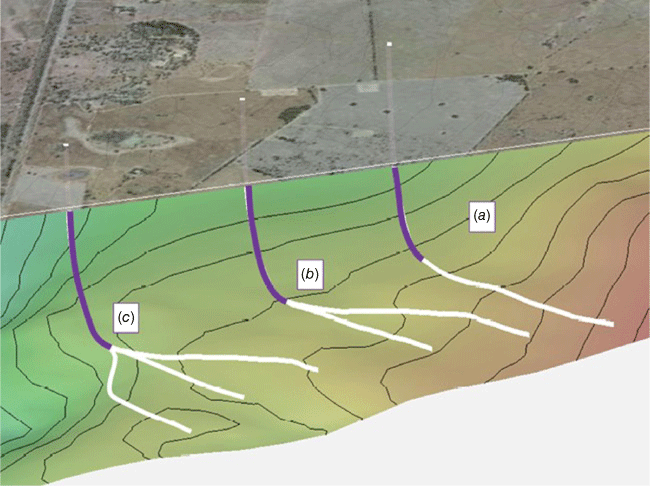
Meridian SeamGas project 3D view of the C Seam coal thickness property with associated wells and C Seam top interpretations (Gorton and Martin 2022).
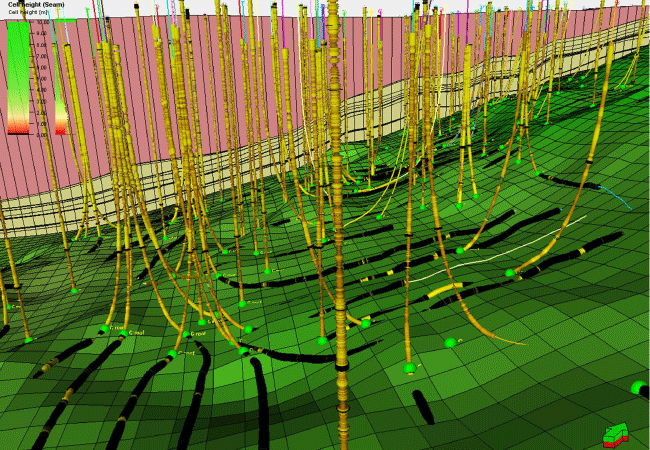
The artificial lift system in the wells have generally been progressive cavity pumps; however, Westside have recently been moving to the use of foam in the wells as the lifting mechanism.
Conclusions
There are both CSG and conventional plays in the Galilee Basin. The conventional Lake Galilee Sandstone play in Albany 1 (Comet Ridge) flowed 230 mscf/day across a 13 m interval. The most extensive CSG production testing is the Galilee Energy Glenaras project in Area A. This project is completed in the undersaturated Betts Creek Coal Measures and has indicated high permeability and water production rates in initial and ongoing production pilots. Galilee Energy has used both vertical and lateral wells to shield inner producing wells from water influx and have incrementally increased gas production to ~90 mscf/day in the pilot.
The Northern Bowen Basin has been commercially producing fields in Area A, C and D. The primary completion has been SIS wells with varying designs and well intercept locations as noted above. Achieving commercial rates in the area still appears to be technically challenging. Currently, the concept of placing of below seam lateral wells, containing more than twenty indirect hydraulic fracture stages is being trialled at the Moranbah North Mine site (Johnson et al. 2021).
Area B contains exploration and appraisal projects that have demonstrated moveable volumes of gas to establish PCAs. However, there appears to have not yet been wells that have demonstrated gas production rates in line with other areas of the Bowen Basin. Whilst Contingent Resources must have been reported to obtain the PCAs, there has been little activity reported to advance these resources or demonstrate a substantive ‘technology under development’ (e.g. as required under the 2018 Petroleum Resources Management System) (SPE et al. 2018). Several technologies including vertical hydraulic fracturing and SIS wells have been trialled. This area is geologically complex based on a higher degree of structuration associated with the Jellibah Fault, a major structural feature within the Bowen Basin.
State Gas’ Reids Dome Project, Comet Ridge’s Maholo North and Santos’ Arcadia Valley project are the most promising to deliver commercial volumes of gas. These areas have used SIS and hydraulic fracturing technologies. Extensions of Denison Trough conventional gas are being developed by Denison Gas, but results from 2021 drilling activities have not been reported.
In the Northern Bowen Basin Area D, the Meridian SeamGas project has been the most advanced in developing and supplying commercial amounts of gas. Efforts to re-enter former Conoco exploration areas by new operators in the 2000s were largely unsuccessful. Westside reported refracturing trials in previously producing areas, but further activities were limited. Westside’s trialling of up-dip dual-laterals in a single seam before moving to tri-laterals has been the most successful technology. Based on this design now being used as a standard in the area, it is inferred that the technology results in better production.
In almost every area of the Northern Bowen Basin, horizontal well drilling has been a key technology in commercial development. As aforementioned, no technologies have advanced developments in Area B.
References
Arrow Energy Limited (2008) M100V, M100GMA and M100GMB Well Completion Report, CR052865. Retrieved from https://geoscience.data.qld.gov.au/data/report/cr052865Australian Government (2021) NORTH BOWEN AND GALILEE STRATEGIC BASIN PLAN. Retrieved from https://www.industry.gov.au/publications/north-bowen-and-galilee-strategic-basin-plan/summary-plan
Blue Energy Limited (2022a) Sapphire 5V reaches TD intersecting 45m of net coal [Press release]. Retrieved from https://cdn-api.markitdigital.com/apiman-gateway/ASX/asx-research/1.0/file/2924-02543195-2A1385939?access_token=83ff96335c2d45a094df02a206a39ff4
Blue Energy Limited (2022b) Blue moving to 1st Lateral Well in Bowen Drilling Campaign [Press release]. Retrieved from https://cdn-api.markitdigital.com/apiman-gateway/ASX/asx-research/1.0/file/2924-02548878-2A1388323?access_token=83ff96335c2d45a094df02a206a39ff4
Blue Energy Limited (2022c) COO PESA Symposium Presentation [Press release]. Retrieved from https://cdn-api.markitdigital.com/apiman-gateway/ASX/asx-research/1.0/file/2924-02566366-2A1397657?access_token=83ff96335c2d45a094df02a206a39ff4
Comet Ridge Limited (2018) First Measured Gas Flow from Galilee Sandstone Reservoir [Press release]. Retrieved from https://wcsecure.weblink.com.au/pdf/COI/01994645.pdf
Comet Ridge Limited (2019) Stimulation update - Albany 2 & Albany 1 wells [Press release]. Retrieved from https://wcsecure.weblink.com.au/pdf/COI/02189090.pdf
Comet Ridge Limited (2020a) Albany Operations Update [Press release]. Retrieved from https://wcsecure.weblink.com.au/pdf/COI/02196236.pdf
Comet Ridge Limited (2020b) Annual Report 2020 [Press release]. Retrieved from https://wcsecure.weblink.com.au/pdf/COI/02284965.pdf
Comet Ridge Limited (2021a) Funded Acquisition of APLNG’s 30% Mahalo Gas Project interest [Press release]. Retrieved from https://wcsecure.weblink.com.au/pdf/COI/02403105.pdf
Comet Ridge Limited (2021b) Mahalo North 2 second lateral section successfully drilled & rig released [Press release]. Retrieved from https://wcsecure.weblink.com.au/pdf/COI/02452057.pdf
Comet Ridge Limited (2022a) Settlement of Mahalo Acquistion [Press release]. Retrieved from https://wcsecure.weblink.com.au/pdf/COI/02536225.pdf
Comet Ridge Limited (2022b) Santos exercise option to increase Mahalo Gas Project Equity [Press release]. Retrieved from https://wcsecure.weblink.com.au/pdf/COI/02572381.pdf
Comet Ridge Limited (2022c) Mahalo North pilot gas exceeds 1.7 million cubic feet per day [Press release]. Retrieved from https://wcsecure.weblink.com.au/pdf/COI/02558999.pdf
Comet Ridge Limited (2022d) Mahalo North pilot test achieves objectives [Press release]. Retrieved from https://wcsecure.weblink.com.au/pdf/COI/02561973.pdf
Galilee Energy Limited (2022) Managing Director Good Oil & Gas Presentation [Press release]. Retrieved from https://wcsecure.weblink.com.au/pdf/GLL/02564398.pdf
Garnett AJ, Greig CR, Oettinger M (2014) ‘ZeroGen IGCC with CCS—A Case History.’ (University of Queensland) Retrieved from https://energy.uq.edu.au/files/1084/ZeroGen.pdf
Gorton J, Martin M (2022) The transformation of Australia’s first commercial CSG field into a major gas project: how innovation and subsurface understanding has driven its success. The APPEA Journal 62, 235–244.
| The transformation of Australia’s first commercial CSG field into a major gas project: how innovation and subsurface understanding has driven its success.Crossref | GoogleScholarGoogle Scholar |
Jeffrey R, Koenig B, Paterson L (1991) A Review of Testing, Stimulation, and Production Data from Selected Coalbed Methane Wells in the Southern Bowen Basin. Retrieved from Mount Waverly: https://publications.csiro.au/rpr/download?pid=legacy:64&dsid=DS1
Jell PA (2013) ‘Geology of Queensland.’ (Geological Survey of Queensland: Brisbane)
Johnson Jr RL, Mazumder S (2014) Key Factors Differentiate the Success Rate of Coalbed Methane Pilots Outside of North America - Some Australian Experiences, IPTC-18108-MS. Paper presented at the International Petroleum Technology Conference, Kuala Lumpur, Malaysia. (Society of Petroleum Engineers)
Johnson RL, Ramanandraibe HM, Ribeiro A, Ramsay M, Kaa T, Corbett W (2021) Applications of Indirect Hydraulic Fracturing to Improve Coal Seam Gas Drainage for the Surat and Bowen Basins, Australia, Paper AP-URTEC-2021-208375. Paper presented at the SPE/AAPG/SEG Asia Pacific Unconventional Resources Technology Conference, November 2021.
| Crossref |
Lu H, Guevara MO, Zhao C, Zhu L (2022) Application of heel intersect horizontal well concept in coal bed methane play: a case study. The APPEA Journal 62, 66–76.
| Application of heel intersect horizontal well concept in coal bed methane play: a case study.Crossref | GoogleScholarGoogle Scholar |
McMillan DW, Palanyk VS (2007) CBM: Fracture Stimulation–An Australian Experience, SPE 110137. Paper presented at the PE Annual Technical Conference and Exhibition, Anaheim, CA.
Morales RH, Davidson SC (1993) Analysis of the Hydraulic Fracturing Behavior in the Bowen Basin, SPE 25862. Paper presented at the Low Permeability Reservoirs Symposium, Denver, CO.
Phillips LJ, Edwards SA, Bianchi V, Esterle JS (2017) Paleo-environmental reconstruction of Lopingian (Upper Permian) sediments in the Galilee Basin, Queensland, Australia. Australian Journal of Earth Sciences 64, 587–609.
| Paleo-environmental reconstruction of Lopingian (Upper Permian) sediments in the Galilee Basin, Queensland, Australia.Crossref | GoogleScholarGoogle Scholar |
Reeves SR, O’Neill PJ (1989) Preliminary Results from the Broadmeadow Pilot, Project Bowen Basin, Australia. Paper presented at the 1989 Coalbed Methane Symposium, 17–20 April 1989, Tuscaloosa, AL.
Santos Limited (2018) Santos GLNG announces final investment decision on A$400 million Arcadia project [Press Release]. Retrieved from https://www.santos.com/news/santos-glng-announces-final-investment-decision-on-a400-million-arcadia-project/
Santos Limited (2019) 2019 Full-year Results Announcement and Presentation [Press Release]. Retrieved from https://www.santos.com/wp-content/uploads/2020/02/2019-full-year-results-announcement-and-presentation.pdf
Scott MP, Johnson Jr RL, Spilsbury-Schakel J, Garnett AJ (2023) Strategic Basins Gas Supply: Technology Review of the Northern Bowen and Galilee Basins. The University of Queensland Centre Natural Gas Project Report. The University of Queensland, Brisbane, Australia.
SPE, WPC, AAPG, SPEE, SEG, SPWLA, EAGE (2018) Petroleum Resources Management System (PRMS). Retrieved from https://www.spe.org/en/industry/petroleum-resources-management-system-2018/
State Gas Limited (2021) Resource Estimates and Final Rougement Well Results [Press release]. Retrieved from https://stategas.com/wp/wp-content/uploads/2021/08/2021-08-27-Resource-Estimates-and-Final-Rougemont-well-results_Final.pdf
State Gas Limited (2022a) State Gas spuds Rougement-3 horizontal well [Press Release]. Retrieved from https://stategas.com/wp/wp-content/uploads/2022/09/2022-09-16-State-Gas-spuds-new-horizontal-well.pdf
State Gas Limited (2022b) State Gas to drill new horizontal well [Press Release]. Retrieved from https://stategas.com/wp/wp-content/uploads/2022/09/2022-09-12-State-Gas-to-drill-new-horizontal-well_Final.pdf
Truong D, Hungerford F, Draheim P (1990) Gas Drainage by Longhole Drilling at Gas Moura No. 2 Mine – An Operating Experience. Bowen Basin Symposium, Mackay, Australia.
Vatan M, Desplat M, Giambalvo A, Amorer, GJ (2018) Underbalanced Jetting in CSG play, SPE 191944. Paper presented at the SPE Asia Pacific Oil and Gas Conference and Exhibition, Brisbane, Australia. (Society of Petroleum Engineers)
Wold M, Davidson SC, Wu B, Choi SK, Koenig RA (1995) Cavity Completion For Coalbed Methane Stimulation - An Integrated Investigation And Trial In The Bowen Basin, Queensland. SPE Annual Technical Conference and Exhibition, Dallas, TX.
| Crossref |

Dr Michael Scott is a consulting Petroleum Engineer with nearly 20 years’ experience in the industry. He currently works on various projects, including as an Industry Fellow at the University of Queensland (UQ). He studied Mechanical Engineering at UQ and then went on to complete his PhD in Aerospace Engineering in 2005. In the same year, he joined Queensland Gas Company as a Petroleum Engineer where he spent 7 years in a range of subsurface roles. In 2012, he joined Senex Energy, where his most recent role was as the Production Engineering Manager. Following this, in November 2018, he joined the Petroleum and Gas Inspectorate where he worked for three and a half years and was the Executive Petroleum Engineer (Well Operations) when he left. Michael is a member of the Society of Petroleum Engineers (SPE) and Engineers Australia, is a Chartered Professional Engineer and a Registered Petroleum Engineer of Queensland. He also has a Certificate III in Dog Behaviour and Training. |

Prof Raymond Johnson Jr is currently Professor of Well Engineering and Production Technology at UQ, Centre for Natural Gas. He has a PhD in mining engineering, a MSc in petroleum engineering, a Graduate Diploma in Information Technology, and a BA in Chemistry. Prof Johnson is a Life Member of SPE, past Queensland SPE Section chair, twice co-Chair of the SPE Unconventional Reservoir Conference Asia Pacific, 2019 co-Chair and 2021 Advisor of the Unconventional Resources Technology Conference Asia Pacific Conference, and twice SPE Regional Technical Award Recipient (Production Operations and Management and Information). Ray has served in numerous Technical and Management positions in service, operating and consulting companies in the United States and Australia. Prof Johnson is a Fellow in Engineers Australia. |

Drs Janny A Spilsbury-Schakel has a postgraduate degree in Geology (Paleontological Stratigraphy) from the Vrije Universiteit in Amsterdam. She has worked for over 30 years in the international oil and gas industry with Shell International, Santos, Woodside and Oil Search. She started off as a Wellsite Petroleum Engineer, was one of the first females to work offshore in the Northern North Sea, and has held positions as Production and Reservoir Geologist, Development Manager, Chief Geologist and, most recently, Senior Vice President Subsurface. She has worked and lived in Europe, USA, Asia and Australia, and also worked on assets in Western Siberia, Brazil, the Middle East and Africa. Janny is currently engaged as an Industry Fellow at the UQ Centre for Natural Gas in Brisbane. She is a member of the Australian Institute of Company Directors, PESA and SPE. |

Professor Andrew Garnett has led a large multidisciplinary research program focussing on varied aspects of Queensland’s natural gas industry for more than a decade. He has more than 30 years’ international experience within multinational companies across conventional and unconventional hydrocarbon projects. Professor Garnett began his career in the oil and gas sector, prior to consulting on unconventional developments. Prior to joining UQ, he led the 500 MW ZeroGen integrated gasification combined cycle and carbon capture and storage (CCS) project, ultimately closing the project down as CEO. Most recently, as the Director of the UQ CCS Program, Professor Garnett led a 3-year study identifying strategies to make material emissions cuts in Queensland as well as to enable low carbon baseload power, deliver significant benefits for regional employment and stimulate the hydrogen economy. He has been a reviewer for the International Energy Agency’s World Energy Outlook (natural gas) and Energy Technology Perspectives. |


